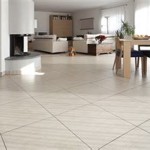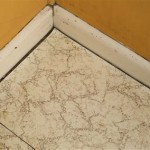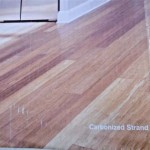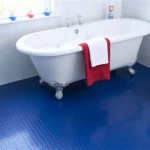Exploring the Advantages of 3/4 Inch Wood Flooring
Wood flooring remains a popular choice for homeowners and interior designers due to its aesthetic appeal, durability, and potential to increase property value. Among the various options available, 3/4 inch wood flooring stands out as a standard thickness offering a balance of stability, longevity, and affordability. This article will delve into the characteristics, benefits, installation considerations, and maintenance requirements of 3/4 inch wood flooring, providing comprehensive information for those considering this flooring option.
The term "3/4 inch wood flooring" refers to the thickness of the individual planks or strips. This measurement is a traditional standard, providing a substantial foundation compared to thinner options like engineered flooring or laminate alternatives. The thickness directly impacts the floor's ability to withstand wear and tear, its suitability for different installation methods, and its overall structural integrity.
Durability and Longevity
One of the primary advantages of 3/4 inch wood flooring is its inherent durability. The substantial thickness allows the flooring to endure significant foot traffic, furniture weight, and general wear without readily showing signs of damage. This resilience translates to a longer lifespan compared to thinner flooring options, making it a worthwhile investment in the long run.
Furthermore, the thickness of 3/4 inch wood flooring allows for multiple refinishing cycles. Over time, even the most well-maintained wood floors can accumulate scratches, dents, and other imperfections. Refinishing involves sanding down the top layer of the wood to expose a fresh surface, effectively restoring the floor to its original beauty. Thinner flooring options often have limited refinishing potential, as the top wear layer may be too thin to withstand multiple sanding processes. The 3/4 inch thickness provides ample material for several refinishing cycles, extending the floor's lifespan and aesthetic appeal for decades.
The type of wood also plays a crucial role in the overall durability. Hardwood species like oak, maple, and hickory are particularly well-suited for 3/4 inch flooring due to their inherent hardness and resistance to wear. Softer wood species can also be used, but they may require more frequent refinishing or be more prone to dents and scratches. Understanding the Janka hardness rating of different wood species is essential when selecting the right 3/4 inch wood flooring for a specific application.
Proper installation is paramount to maximizing the durability of 3/4 inch wood flooring. A solid subfloor is crucial to prevent flexing and movement, which can lead to premature wear and tear. Furthermore, using appropriate fasteners and adhesives ensures that the flooring is securely attached to the subfloor, minimizing the risk of squeaking, warping, or other issues.
Installation Options
The 3/4 inch thickness of wood flooring offers versatility in terms of installation methods. While thinner flooring options may be limited to floating or glue-down installations, 3/4 inch flooring can be nailed, stapled, or glued directly to a suitable subfloor. This flexibility allows for a more secure and long-lasting installation, particularly in areas with high traffic or uneven subfloors.
Nailing or stapling is a common installation method for 3/4 inch solid hardwood flooring. This involves driving fasteners through the tongue of each plank into the subfloor, creating a strong and secure connection. This method is typically used over wooden subfloors and requires specialized tools like a flooring nailer or stapler. The advantage of nailing or stapling is its speed and efficiency, allowing for relatively quick installation over large areas.
Glue-down installation involves applying adhesive to the subfloor and then pressing the planks into place. This method is often used over concrete subfloors or in areas where nailing or stapling is not feasible. The glue provides a strong bond between the flooring and the subfloor, minimizing movement and preventing gaps from forming. Selecting the appropriate adhesive is crucial to ensure proper adhesion and prevent issues like bubbling or delamination.
Regardless of the chosen installation method, proper acclimation of the wood flooring is essential. Acclimation involves allowing the wood to adjust to the humidity and temperature of the installation environment before installation. This helps to minimize expansion and contraction after installation, preventing issues like warping, cupping, or gapping. The recommended acclimation period can vary depending on the wood species, humidity levels, and manufacturer's recommendations.
Professional installation is highly recommended for 3/4 inch wood flooring. Experienced installers have the knowledge, skills, and tools necessary to ensure a proper and long-lasting installation. They can also assess the subfloor for potential issues and recommend appropriate solutions to ensure a level and stable surface for the flooring.
Cost Considerations and Value
The cost of 3/4 inch wood flooring can vary depending on several factors, including the wood species, grade, finish, and installation method. Generally, 3/4 inch wood flooring is more expensive than thinner alternatives like laminate or engineered flooring. However, the increased cost is often justified by its superior durability, longevity, and aesthetic appeal.
When comparing the cost of different wood species, hardwoods like oak, maple, and hickory tend to be more affordable than exotic or rare species. The grade of the wood also affects the price, with higher grades featuring fewer knots and imperfections. The finish can also impact the cost, with prefinished flooring typically being more expensive than unfinished flooring that requires on-site finishing.
Installation costs can also vary depending on the complexity of the project and the labor rates in a particular area. Nailing or stapling is generally less expensive than glue-down installation, as it requires less time and materials. However, the specific installation method will depend on the subfloor and the desired outcome.
Despite the higher initial cost, 3/4 inch wood flooring can provide significant long-term value. Its durability and longevity mean that it will likely last for many years with proper maintenance, reducing the need for replacement. Furthermore, its ability to be refinished multiple times extends its lifespan and aesthetic appeal. Wood flooring is also known to increase property value, making it a worthwhile investment for homeowners looking to enhance their homes.
When considering the overall cost and value of 3/4 inch wood flooring, it is important to factor in its aesthetic appeal. Wood flooring adds warmth, character, and sophistication to any space, creating a welcoming and inviting atmosphere. Its natural beauty complements various décor styles, making it a versatile choice for both traditional and modern homes.
Proper maintenance is essential to preserving the beauty and longevity of 3/4 inch wood flooring. Regular sweeping or vacuuming helps to remove dirt and debris that can scratch or dull the finish. Occasional damp mopping with a wood-specific cleaner can help to maintain the floor's shine and prevent buildup. Avoiding harsh chemicals, abrasive cleaners, and excessive moisture is crucial to prevent damage to the finish and the wood itself.
In summary, 3/4 inch wood flooring offers a compelling combination of durability, versatility, and aesthetic appeal. Its substantial thickness provides a solid foundation that can withstand wear and tear, while its installation options accommodate various subfloor types and project requirements. While the initial cost may be higher than thinner alternatives, its long-term value and potential to increase property value make it a worthwhile investment for homeowners seeking a flooring option that will stand the test of time.

Allen Roth Natural Oak 3 1 4 In W X T Varying Length Smooth Traditional Solid Hardwood Flooring 27 Sq Ft Carton The Department At Com

Unfinished Red Oak 3 Common 1 4 Solid Hardwood Xulon Flooring Woodwudy Whole

Henry County Hardwoods Unfinished Solid Red Oak Hardwood Flooring Select 3 4 Inch Thick X 1 Wide Square Foot Chicago

3 4 Inch Thick Engineered Baltic Birch Ply 5 8 Mm Wear Layer

3 X 4 1 Common Red Oak Unfinished Nature Wood Floors

Bellawood 3 4 In Westover Oak Solid Hardwood Flooring 5 Wide Ll

3 1 4 X White Oak Common Unfinished Solid Reserve Hardwood Flooring

3 4 Inch Thick Engineered Baltic Birch Ply 5 8 Mm Wear Layer

Wood Floors Plus Solid Oak Clearance Hardwood Cb1226tw Classic Brown 3 4 Inch X 1 22 Sf Ctn Cabin Grade

3 4 X 1 Select Better Red Oak Unfinished Solid Flooring








